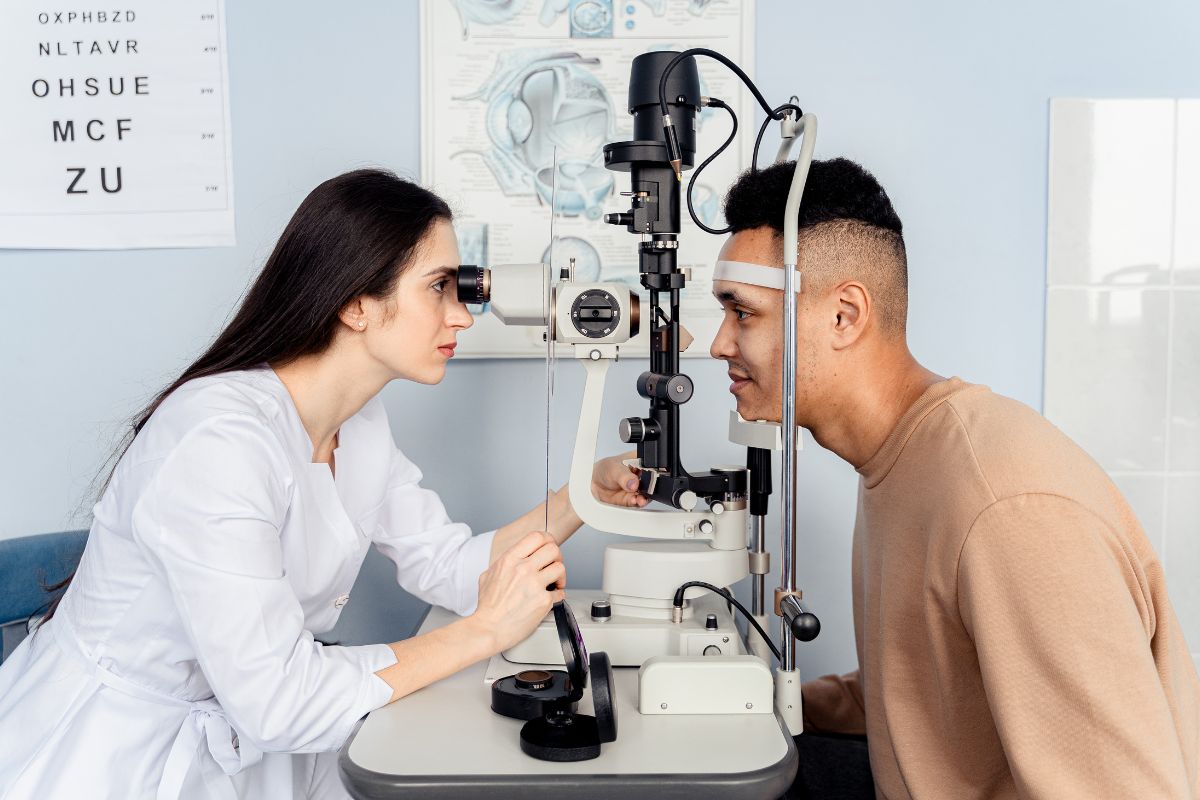Dry Eye Symptoms and Eye Strain: A Comprehensive Guide to Effective Management in 2025
In 2025, the digital age has profoundly impacted our lives, intertwining itself with nearly every aspect of our daily routines. This pervasive digital presence, while offering unprecedented connectivity and convenience, has also brought about a surge in eye-related issues. Among the most prevalent are eye strain and dry eye syndrome, conditions often intertwined and mutually exacerbating. Understanding the nuances of these conditions, their underlying causes, and the intricate relationship between them is crucial for developing effective management strategies. This comprehensive guide will delve into the specifics of dry eye symptoms and eye strain, exploring their causes, their synergistic effects, and providing practical solutions to alleviate discomfort and enhance your visual experience.
Understanding the Nuances of Dry Eye Symptoms: A Deeper Dive
Dry eye syndrome, a prevalent condition affecting millions globally, occurs when the eyes don't produce enough tears or when the quality of the tears produced is inadequate, leading to rapid evaporation. This tear deficiency disrupts the delicate balance of the ocular surface, resulting in a range of uncomfortable and potentially vision-impairing symptoms. The severity and frequency of these symptoms vary greatly among individuals, influenced by factors such as age, genetics, environmental conditions, and underlying medical conditions.
Beyond the common symptoms previously discussed, a more comprehensive understanding includes:
- Burning or Stinging Sensation: A persistent, often intense, burning or stinging sensation is a classic indicator of dry eyes. This can range from a mild discomfort to a severe burning that interferes with daily activities. The sensation often intensifies as the day progresses.
- Itching and Irritation: The dryness and irritation of the ocular surface trigger a significant itching response. The urge to rub the eyes is strong, but rubbing should be avoided, as it can lead to further damage.
- Redness and Bloodshot Appearance: Inflammation of the eye's surface, resulting from dryness and irritation, manifests as redness and a bloodshot appearance. This visible symptom can be a source of concern and self-consciousness.
- Excessive Tearing (Paradoxical): While paradoxical, excessive tearing can be a compensatory mechanism of dry eye. This reflex response is the body's attempt to combat the dryness and irritation, but it does not effectively address the underlying problem.
- Stringy Mucus: In severe cases, dry eye can result in the formation of stringy mucus in the eyes, further contributing to discomfort and visual disturbance.
- Blurry or Fluctuating Vision: The tear film plays a crucial role in maintaining clear vision. Its disruption due to dryness leads to blurred or fluctuating vision, affecting the ability to focus clearly, especially during extended periods of near-work tasks such as reading or computer use.
- A Gritty or Sandy Sensation: Many individuals experiencing dry eye describe a persistent sensation of grittiness or sand in their eyes.
- Eye Fatigue and Discomfort: Dry eyes contribute significantly to eye fatigue and discomfort, often worsening with prolonged screen use and reduced blinking frequency. This can lead to headaches and overall reduced productivity.
- Sensitivity to Light (Photophobia): Increased sensitivity to light is a common complaint among dry eye sufferers. The inflamed, dry ocular surface becomes more vulnerable to light stimuli, leading to discomfort and sometimes even pain.
- Difficulty Wearing Contact Lenses: Dry eye makes wearing contact lenses very difficult and uncomfortable, sometimes making them unusable.
The profound impact of dry eye symptoms on daily life should not be underestimated. Persistent or worsening symptoms warrant immediate attention from a healthcare professional.
The Interplay Between Dry Eye Symptoms and Eye Strain: A Synergistic Relationship
Eye strain, a condition characterized by discomfort and fatigue of the eye muscles, frequently coexists with dry eye syndrome, creating a vicious cycle of discomfort. The primary culprit is prolonged near-work activities, such as using computers, smartphones, and tablets. These activities often lead to reduced blink rate. Blinking is essential for maintaining the integrity of the tear film. A decrease in blink rate accelerates tear evaporation, increasing dryness and exacerbating dry eye symptoms. Additionally, the sustained effort to focus on screens strains the eye muscles, leading to fatigue and further discomfort.
The synergistic relationship between eye strain and dry eye significantly amplifies the overall impact on visual comfort. The strain on eye muscles due to extended near-work, combined with the dryness and irritation of the ocular surface, leads to increased eye fatigue, headaches, and a general decline in visual well-being. This combination can affect work performance, leisure activities, and overall quality of life. Addressing both conditions concurrently is crucial for effective and lasting relief.
Practical Strategies for Effective Management: A Multifaceted Approach
Managing dry eye symptoms and eye strain requires a comprehensive approach encompassing lifestyle adjustments, environmental modifications, and therapeutic interventions. This multifaceted strategy is designed to address the underlying causes and alleviate the symptoms simultaneously.
Lifestyle Adjustments: Optimizing Daily Habits
- The 20-20-20 Rule: Every 20 minutes, shift your gaze to an object 20 feet away for 20 seconds. This simple yet effective exercise helps to relax the eye muscles and reduces strain.
- Conscious Blinking: Make a conscious effort to blink frequently. Prolonged screen use often leads to decreased blink rate, accelerating tear evaporation.
- Hydration: Adequate hydration is crucial for maintaining tear production. Drink plenty of water throughout the day.
- Regular Breaks: Incorporate regular breaks into your workday and leisure activities to reduce prolonged screen time and allow your eyes to rest.
- Healthy Diet: A balanced diet rich in omega-3 fatty acids and antioxidants supports overall eye health.
- Stress Management: Stress can contribute to dry eye symptoms. Incorporating stress-reducing techniques such as yoga, meditation, or deep breathing exercises into your daily routine can promote overall well-being.
Environmental Modifications: Optimizing Your Surroundings
- Adjust Screen Brightness and Position: Reduce glare from screens by adjusting the brightness and positioning the screen to minimize reflections.
- Humidifier Use: Use a humidifier, especially during dry seasons, to maintain adequate moisture levels in the air, which reduces tear evaporation.
- Avoid Smoking: Smoking significantly damages the eyes and worsens dry eye symptoms. Quitting smoking is crucial for optimal eye health.
- Appropriate Lighting: Ensure appropriate lighting levels to minimize eye strain.
Therapeutic Products: Targeted Interventions
- Artificial Tears: Over-the-counter artificial tears can provide temporary relief from dryness and discomfort. Consult an ophthalmologist or optometrist to determine the most suitable type and frequency of use.
-
Wise Quest Soothing Eye Patches: For targeted soothing relief from dry eye symptoms and eye fatigue, consider Wise Quest Soothing Eye Patches. These patches, infused with traditional Chinese herbal medicine, effectively alleviate eye fatigue, dryness, astringency, redness, and swelling caused by prolonged screen use. They promote healthy blood circulation, helping to relieve most eye discomfort and disease.

When Professional Help is Necessary: Seeking Expert Guidance
While many strategies can effectively manage dry eye symptoms and eye strain, professional guidance is crucial in certain situations. If symptoms are persistent, worsening, or significantly affecting your daily life, consult an ophthalmologist or optometrist. They can perform a thorough eye examination, identify underlying causes, and recommend appropriate treatments. Early intervention can prevent long-term complications and ensure optimal eye health.
Conclusion: Prioritizing Eye Health in 2025 and Beyond
In our increasingly digital world, prioritizing eye health is paramount. The synergistic relationship between dry eye and eye strain necessitates a proactive and multifaceted approach to management. By adopting lifestyle modifications, optimizing your environment, and utilizing therapeutic products like Wise Quest Soothing Eye Patches, you can significantly improve your visual comfort and overall well-being. Remember, investing in your eye health is an investment in your overall quality of life.









